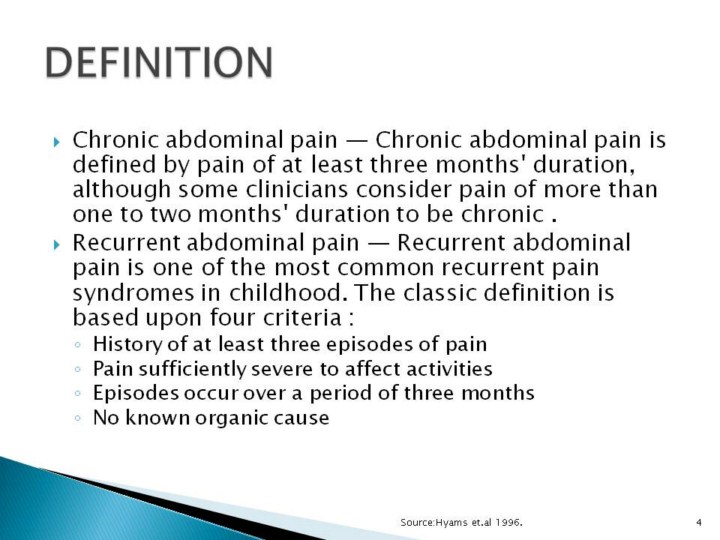| front |1 |2 |3 |4 |5 |6 |7 |8 |9 |10 |11 |12 |13 |14 |15 |16 |17 |18 |19 |20 |21 |22 |23 |24 |25 |26 |27 |28 |29 |30 |31 |32 |33 |34 |35 |36 |37 |38 |39 |40 |41 |42 |43 |44 |45 |46 |47 |48 |49 |50 |51 |52 |53 |54 |55 |56 |57 |58 |59 |60 |61 |62 |63 |64 |65 |66 |67 |review |
 |
- Chronic abdominal pain can be organic or nonorganic, depending on whether a specific etiology is identified. - Nonorganic abdominal pain or functional abdominal pain refers to pain without evidence of anatomic, inflammatory, metabolic, or neoplastic abnormalities. - In the original case series, recurrent abdominal pain of childhood was considered to be the diagnosis . However, using the term as a description rather than a diagnosis probably is more accurate . - Clinical and laboratory observations suggest that recurrent abdominal pain in childhood is not a single entity, but a symptom complex with organic and functional etiologies that can be exacerbated by psychologic disorders. Source :Di Lorenzo et al 2001; Dufton L, et al 2009
|